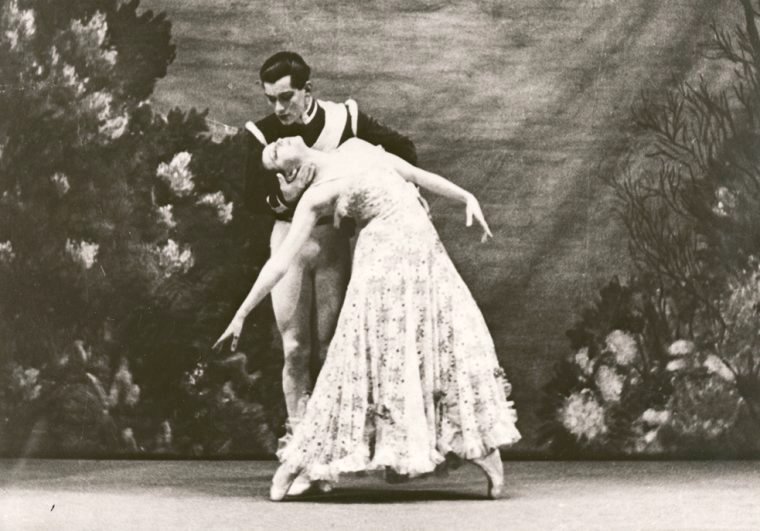OTD in early British television: 2 March 1937

John Wyver writes: the afternoon of Tuesday 2 March 1937, just four months after the AP service had begun, featured one of television’s most innovative pre-war programmes. Fugue for Four Cameras was a strikingly experimental six-minute dance collaboration created by producer Stephen Thomas with choreographer Antony Tudor.
The broadcast began with Maude Lloyd centred on screen dressed in practice costume and performing a classical solo to J.S. Bach’s ‘Fugue in D Minor’ . As a second musical theme was introduced, a superimposed image of Lloyd from another camera joined her on screen, and then a third, and a fourth.
Lloyd later recalled the experience:
Because of the technical side-angling and bringing in the four cameras as the theme of the fugue progressed, we were given a space in which to work which I think must have measured about 10 feet by 8 feet…
In order that I should learn (like an arithmetric table) both the steps of the choreography – which inevitably became rather repetitive – and the moments when it was vital that I should be in an exact place on the floor, I remember Tudor and myself sitting drinking coffee in the Alexandra Palace canteen writing the sequence of the steps over the music score – something I had never had to do before.
For K.P. Hunt, writing for Television and Short-wave World,
The intermingling of these effects was attractively novel and had a kind of mystic appearance which was fascinating and admirably suited to the music.
And looking back to the pre-war transmissions, John Swift in 1950 celebrated Fugue for Four Cameras as ‘one of the most extraordinary programmes of pre-war days.’
There’s no image of Maude Lloyd performing this remarkable miniature, and so the best I can offer by way of Illustration above is her dancing with Hugh Laing in ‘Jardin aux Lilas’, in 1936 or thereabouts, from the Jerome Robbins Dance Division Photograph files in the wonderful New York Public Library Digital Collections.
‘Jardin aux Lilas’ was also choreographed by Antony Tudor, danced to music by Ernest Chausson, with scenery and costumes designed by Hugo Stevenson. It was first performed with Ballet Rambert at the Mercury Theatre on 26 January 1936, just over a year before Fugue for Four Cameras.
Maude Lloyd made some 20 appearances in the AP studios, often performing Tudor’s works. She had arrived in London from South Africa, just over a decade before. She studied with Marie Rambert, returned for a time to South Africa, but from 1930 was back in London as one of her teacher’s dancers in the the first iteration of the company that would become Ballet Rambert.
Wikipedia takes up the story:
When Lloyd met Antony Tudor in one of Rambert’s classes in 1930, she was immediately drawn to him, and he to her. She, along with Hugh Laing, became one of his muses, inspiring him to create numerous works with roles focusing on her special qualities. “Not only was she very pretty[her 2004 Telegraph obituary noted], with beautifully curved feet, but she also danced with a rich, natural expressiveness that fed the psychological realism with which Tudor was experimenting.”
When Tudor fell out with Rambert, Maude Lloyd followed him to his new company The London Ballet, and three of this group’s works with Lloyd were also featured by pre-war television in 1939. She retired from the stage in 1940. In 1939 she married the art and dance critic Nigel Gosling, and after the war she and Gosling wrote dance reviews together under the nom de plume of Alexander Bland.
Leave a Reply